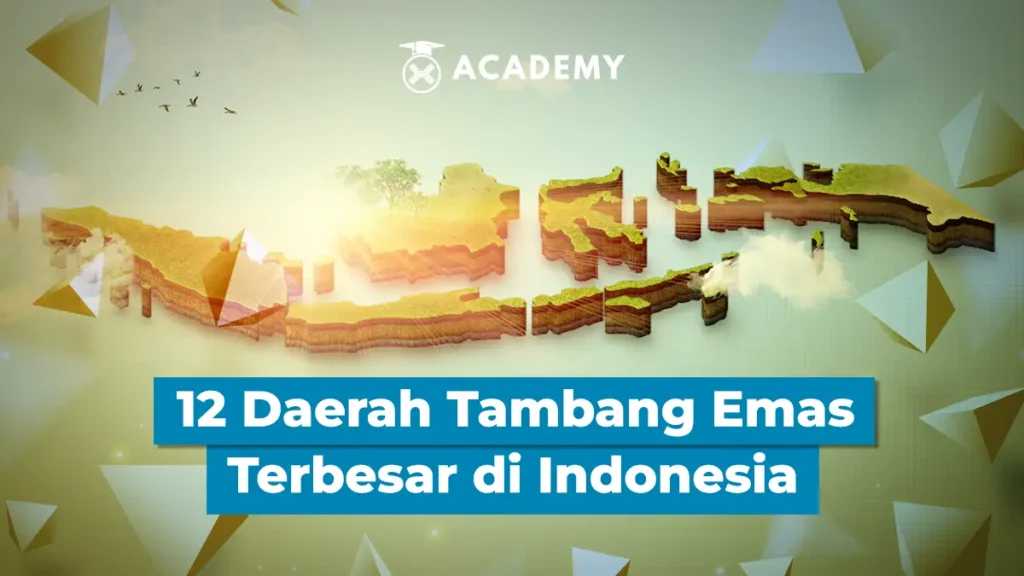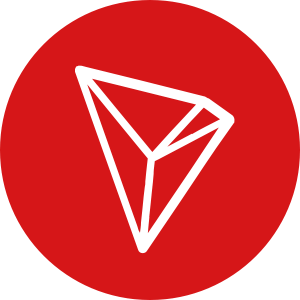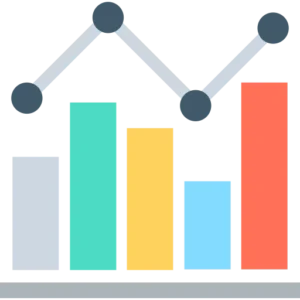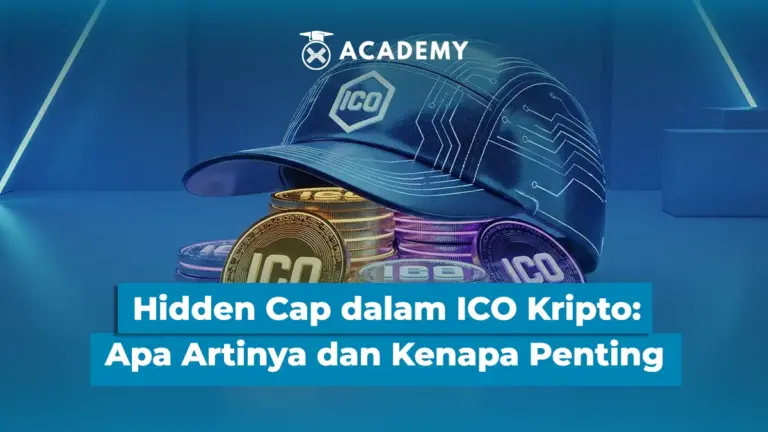Indonesia is one of the world’s leading gold producers with an estimated gold production of 48 tons per year.
According to information we got from the website of Cnn, Indonesia occupies the 6th position as the country with the largest gold reserves of 2,600 tons. In terms of production, Indonesia ranks 8th with a production of 110 MT in 2023.
Meanwhile, quoting CNBC Indonesia, according to the report of the Director General of Mineral and Coal (Dirjen Minerba) of the Ministry of Energy and Mineral Resources (ESDM), in 2023, Indonesia produced 83 tons of pure gold.

List of Largest Gold Mines in Indonesia
Indeed, there are several regions that are the main suppliers of gold in Indonesia. Here are the 12 largest gold producing areas in Indonesia that are important to know, including:
1. Mimika, Central Papua: Grasberg Gold Mine
The Grasberg mine, operated by Freeport, is one of the largest gold mines in Indonesia. The Grasberg mine can produce about 3,000,000 ounces of gold annually, or about 240 kilograms of pure gold per day.
The gold reserves still stored in this mine reach around 1,760,000 tons. In addition to gold, Grasberg also has reserves of uranium, another high-value mining material.
2. Deep Mill Level Zone, Central Papua
Another gold mine in Papua is Deep Mill Level Zone (DMLZ), an underground gold mine. Development of this mine began in 2016 and is expected to operate until 2040.
While Grasberg is still managed by Freeport, DMLZ is managed by PT Inalum after the divestment of PT Freeport’s shares. In 2021, the mine produced 548,800 ounces of gold.
3. Gunung Pongkor, Bogor
The Gunung Pongkor mine, located in Nanggung Sub-district, Bogor Regency, is also among the largest gold producers in Indonesia and is managed by PT Aneka Tambang.
Discovered in 1989, the mine produces around 2 tons of gold per year. With an area of 6,042 hectares, this mine is also one of the largest in Indonesia.
4. Banyuwangi, East Java: Tujuh Bukit Gold Mine
The Tujuh Bukit gold mine in Banyuwangi has been in production since 2017. The mine has an area of 992 square kilometers and still holds gold reserves of around 28,000,000 ounces.
The Tujuh Bukit mine is currently managed by PT Bumi Suksesindo Tbk, part of PT Merdeka Copper Gold Tbk. Uniquely, PT BSI uses environmentally friendly heap leach technology and conducts progressive revitalization on land that has been mined.
5. Batu Hijau, West Nusa Tenggara
Sumbawa not only has beautiful savanna and steppe scenery, but also holds the second largest gold reserve in Indonesia.
The Batu Hijau mine in NTB has gold reserves of 2,700,000 tons, with gold production in 2020 reaching 4,120,000 ounces. The mine is managed by PT Amman Mineral Nusa Tenggara, a subsidiary of PT Merdeka Copper Gold Tbk.
In addition to gold, the Batu Hijau mine also produces large amounts of copper, reaching 4,470,000,000 pounds in 2020.
6. Dompu, West Nusa Tenggara
Dompu Mine, one of the gold producers in NTB Province, is currently managed by PT Sumbawa Timur Mining. It is estimated that this mine has significant gold reserves, considering the total gold potential in NTB reaches 507,000,000 tons.
7. Gosowong, North Maluku
The Gosowong gold mine is located in Halmahera, North Maluku, and is one of the third largest gold producers in Indonesia.
Managed by PT Nusa Halmahera Minerals, the mine is estimated to hold 26,900,000 ounces of gold reserves. Gosowong has been in operation since 1996, indicating the sustainability of the mine’s activities over the years.
North Maluku appears to be rich in gold mining potential. Not only Gosowong, there are also Ngailamo and Sesewet which also have abundant gold reserves.
8. Martabe, South Tapanuli, North Sumatra
The Martabe mine, overseen by PT Agincourt Resources, produced 391,000 ounces of gold in 2021. The mine has been operating since 2008 and is expected to continue operating until 2034, covering an area of 1,303 square kilometers.
In the hills of South Tapanuli, the mine is estimated to still have gold reserves of around 135 tons.
9. Central Aceh, Nanggroe Aceh Darussalam
Aceh has long been recognized as one of the largest gold-producing provinces in Indonesia. Some areas in NAD that are famous for producing large amounts of gold include Bener Meriah and Meulaboh.
10. Pani Mine, Pohuwato, Gorontalo
This gold mine is the latest project managed by PT Merdeka Copper Gold Tbk. As of February 2023, it is estimated to contain 6,350,000 ounces of gold.
The largest gold producing area in Indonesia is located in the Baganite Zone, which has not been explored since the last drilling in 1982.
If operations run smoothly until the end of 2023, this mine is projected to become one of the largest mines in Indonesia.
11. Pujon, Central Kalimantan
The Pujon mine is located in Pujon Village, Central Kalimantan Province. This mine has large gold reserves, reaching 40,000,000 tons.
In addition to gold, Pujon also has significant silver mining potential, with silver reserves reaching 16,000,000 tons.
12. Toka Tindung, North Sulawesi
The island of Sulawesi has some of the largest gold-producing locations in Indonesia, including the Toka Tindung Gold Project in North Sulawesi.
In addition, Sulawesi also has gold potential in other areas such as the Luwu gold mine in South Sulawesi and the Arci mine in Manado.

Conclusion
In conclusion, Indonesia has great gold potential with various leading mines, including Grasberg in Papua, Batu Hijau in Sumbawa, Martabe in North Sumatra, and Toka Tindung in North Sulawesi.
The abundant gold reserves show great economic potential for Indonesia. On the other hand, the main challenges in Indonesia’s gold industry include sustainable environmental management, consistent regulations, and mastery of modern mining technology.
However, opportunities are wide open with stable global demand for gold as an investment commodity and industrial necessity, as well as improvements in mining infrastructure and technology to increase production efficiency.
Through its abundant reserve potential and commitment to sustainable development, Indonesia’s gold industry is in a strong position to face challenges and seize opportunities in the global market.
Want to Invest in Gold or Bitcoin Know the Difference
Quoting the Kompas.com page, gold has long been one of the most popular forms of investment in society. This precious metal is considered a stable asset and its economic value tends not to be easily affected.
However, in recent years, crypto assets such as Bitcoin have also begun to attract the interest of a number of potential investors, including in Indonesia.
Like gold, Bitcoin is also considered to have a stable asset value despite unstable economic conditions, so it is often referred to as “digital gold”.
Although gold and Bitcoin have similar functions at a glance, there are several things to consider to determine which investment is more profitable, including the following:
1. Forms of Assets
Gold is not only used as jewelry, it is also a stable investment option with two main forms: physical as precious metal and digital.
Physical gold can be stored in person or in a bank deposit box, while digital gold is held in a collateralized institution. Bitcoin, on the other hand, is only available in digital form and is stored in a public ledger called blockchain.
2. Asset Availability
Gold is derived from limited natural resources, making it scarce and its economic value uncertain. Bitcoin, on the other hand, has a transparently known quantity, with a total of 21,000,000 units available, most of which have been traded.
3. Buy and Sell Pricing
The price of gold is influenced by various global economic factors, such as inflation, monetary policy, and currency exchange rates.
Bitcoin, on the other hand, has no centralized system regulating the price, being influenced by market factors, investor behavior, and regulatory changes in different countries.
4. Risk Factors
Gold investments are susceptible to the risk of counterfeit gold and the risk of physical loss. On the other hand, Bitcoin has high price volatility and is vulnerable to hacking and online fraud.
Well, that was a complete discussion of the 12 largest gold mining areas in Indonesia in 2024 that we quoted from various sources and you can also read other interesting articles such as how to easily distinguish real gold and fake gold and hopefully this article is useful.
FAQ
1. How much gold does Indonesia produce and where does it rank in the world?
In 2021, Indonesia produced 117.5 tons of pure gold, making it the 9th ranked gold producer in the world.
2. Which area in Indonesia has the largest gold mine?
The largest gold mine in Indonesia is Grasberg in Mimika, Central Papua, which can produce around 3,000,000 ounces of gold per year.
3. Are there environmentally friendly technologies used in gold mining in Indonesia?
Yes, for example the Tujuh Bukit gold mine in Banyuwangi uses environmentally friendly heap leach technology and conducts progressive revitalization of ex-mining land.
4. Besides gold, what other valuable minerals are often found in Indonesian gold mines?
Some gold mines in Indonesia also produce other minerals, such as copper (in Batu Hijau, NTB), silver (in Pujon, Central Kalimantan), and even uranium (in Grasberg, Papua).
5. Is there still potential for new gold mine development in Indonesia?
Yes, there is still a lot of potential for new gold mine development, for example the Pani Mine in Gorontalo which is estimated to have gold reserves of up to 6,350,000 ounces and is expected to start operating by the end of 2023.





 Polkadot 9.66%
Polkadot 9.66%
 BNB 0.78%
BNB 0.78%
 Solana 4.89%
Solana 4.89%
 Ethereum 2.37%
Ethereum 2.37%
 Cardano 1.22%
Cardano 1.22%
 Polygon Ecosystem Token 2.16%
Polygon Ecosystem Token 2.16%
 Tron 2.83%
Tron 2.83%
 Market
Market


